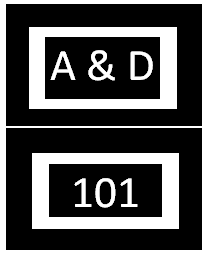The best proof that some people look at art as an investment is the formation of art funds. The funds give private investors a way to get into in the art market using the expertise of fund managers. Speculation is the goal, buying and selling artworks. Some art funds, called closed-end, have an end date, a date by which all the works will be sold and the funds distributed to the investors.
When you want to invest in the stock and bond markets, you can find mutual funds and exchange traded funds (EFTs) that invest broadly. But there are also funds that focus on a narrower segment of the market. For example, you can find a fund that invests in 2000 small-cap U.S. companies, and a fund that focuses on self-driving and electric vehicle companies. Similarly, one art fund buys traditional European works, while another buys works of emerging Chinese artists.
Here are examples of investment strategies that could be used by art funds:
- Period: Impressionist, contemporary, modern, etc.
- Emerging artists: This is a high risk, high reward play. Many of the artists will never be embraced by the market, but a few will become the new stars, and the prices of their works will skyrocket.
- Geography: Buying works produced in one area, say the Middle East. Or taking advantage of regional price differences, buying a type of art in one country where the market is flat, and selling it in another country where the market is hot.
- Opportunist: Buying works believed to be temporarily selling below their normal values. Or buying at a discount from sellers in financial trouble. There is a story of a painting that could have been sold for $5.2 million in 2003 but went for $750,000 in 2008 when the collector desperately needed cash during the financial crisis.
When art funds first started, they were expected to appeal to a large number of investors. But here are some reasons they didn’t take off as hoped:
- They are for accredited investors. These investors must have a net worth of at least $1 million and annual income of at least $200,000.
- The buy-ins are high, usually $500,000 or $1,000,000. One group offered entry in several funds for from $250,000 to $7 million. Funds do not allow withdrawals whenever the investor would like. Not like stock funds that might be priced at $50 a share and can be sold at any time.
- The stock market depends on financial information shared regularly and publicly. But the art market depends on personal relationships and personal taste. Unequal access to information makes it hard for art fund investors to know what is going on behind the scenes.
- As private investments, the funds are unregulated and don’t have to disclose much. They avoid regulation by the Securities and Exchange Commission by limiting investors to 100 under some rules and 500 under others.
- Investors aren’t told which works or artists will be bought. They might be turned off by purchases of works by artists they don’t like, whereas most stock fund investors don’t care which companies are represented in the fund.
Fund managers receive a share of profits, say 20% of the gain when a work is sold, and an annual fee, say 2% of the portfolio’s value. Imagine how difficult it is to determine the value of the fund each year.
We don’t really know how art funds have performed because they don’t share information publicly. Some funds have reported huge gains, but other funds have gone bust. We can assume some are doing well because they continue to attract investors. The Art Fund Group first offered a fund in 2004 and offered four more by 2013 with about 140 total investors.
When we hear about record auction prices, we see that the art market can produce phenomenal profits. But the market is also unpredictable. A portfolio can lose value when personal tastes change or fakes are discovered. Access to information and to artworks is not equal. Transactions sometimes rely more on trust than evidence. And even in the best of circumstances, pricing one-of-kind artworks is difficult. That’s why the success of a fund depends on qualities of the fund managers, such as their experience, trustworthiness, reputation in the art world, and the people they have access to. With the right funds, art can be a sound investment as part of a diversified portfolio.
In a future blog post, we will learn about NFTs, ownership of digital images. They are hot right now, with sale of a work by the artist Beeple going for $69.3 million yesterday, making it the third highest sale by a living artist.
